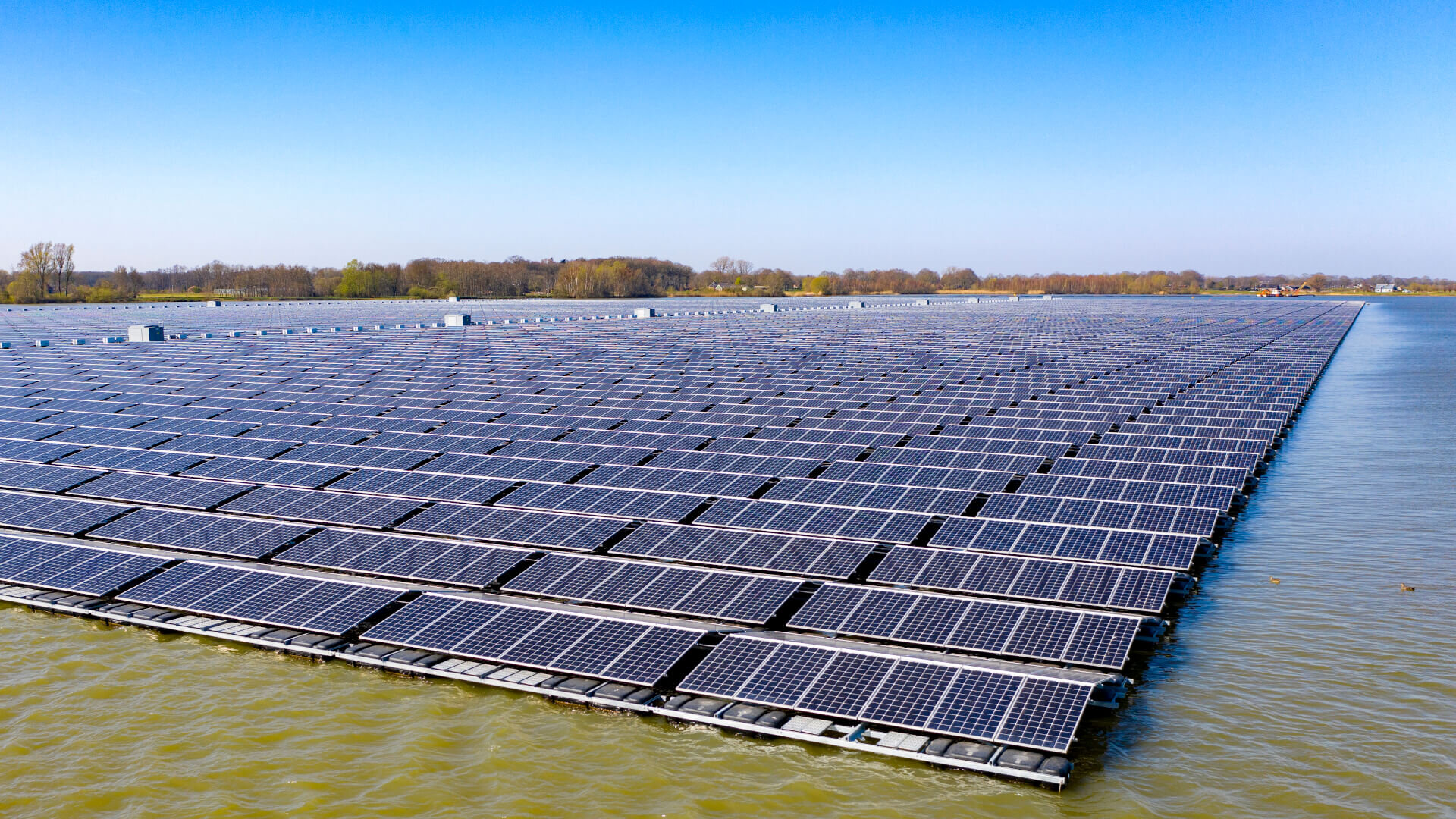
Floating Photovoltaics
This e-book explores on the technical, legal and commercial aspects on how Floating Photovoltaics can evolve as an additional pillar of global energy transition on the path to 100% renewables.
Its findings are based on a 2020 Master’s Thesis that was written in cooperation with the University of Hagen, Germany and Fraunhofer ISE Institute as part of the Environmental Sciences Master’s degree.
Bomhofsplas plant construction, Netherlands, BayWa r.e.
Executive summary
Floating photovoltaic systems can open up completely new possibilities for the expansion of solar generation capacity, especially in countries with high population density and the associated competitive use of available land. At the end of 2019, 2.4 gigawatts (GW) of floating photovoltaic systems had been installed worldwide, of which more than half have been installed in 2018 and 2019 alone.
The advantages over fixed photovoltaic systems, of which 635 GW had been installed worldwide at the end of 2019, are numerous. The most significant advantages are lower lease costs, the use of the already existing power transmission infrastructure and improved energy yield due to the cooling effect of the water. In the area of environmental and species protection, floating photovoltaic systems can combat the evaporation of water in particularly hot regions that are heavily affected by climate change and limit the growth of algae.
As an innovative hybrid solution, i.e. when floating photovoltaics are used together with hydropower plants, there are several advantages over land-based systems.
In contrast to the mature technology, which is known to all relevant stakeholders, and the sustainable business model of land-based PV systems, the expansion of floating photovoltaic systems is still in its infancy. A breakthrough is nevertheless very realistic, despite a mass success story that does not yet exist compared to photovoltaics on land or on roofs. Floating photovoltaic systems are not a new technology, but simply represent a different use of existing technology. Their use on water surfaces not used for other purposes has opened up a potential for a large area of land, which makes the strong worldwide expansion appear sensible both for purely economic reasons and for reasons of environmental protection. Forecasts see a worldwide potential for floating photovoltaic systems in the terawatt range…
If you’re interested in purchasing the whole e-book, get in contact here:



